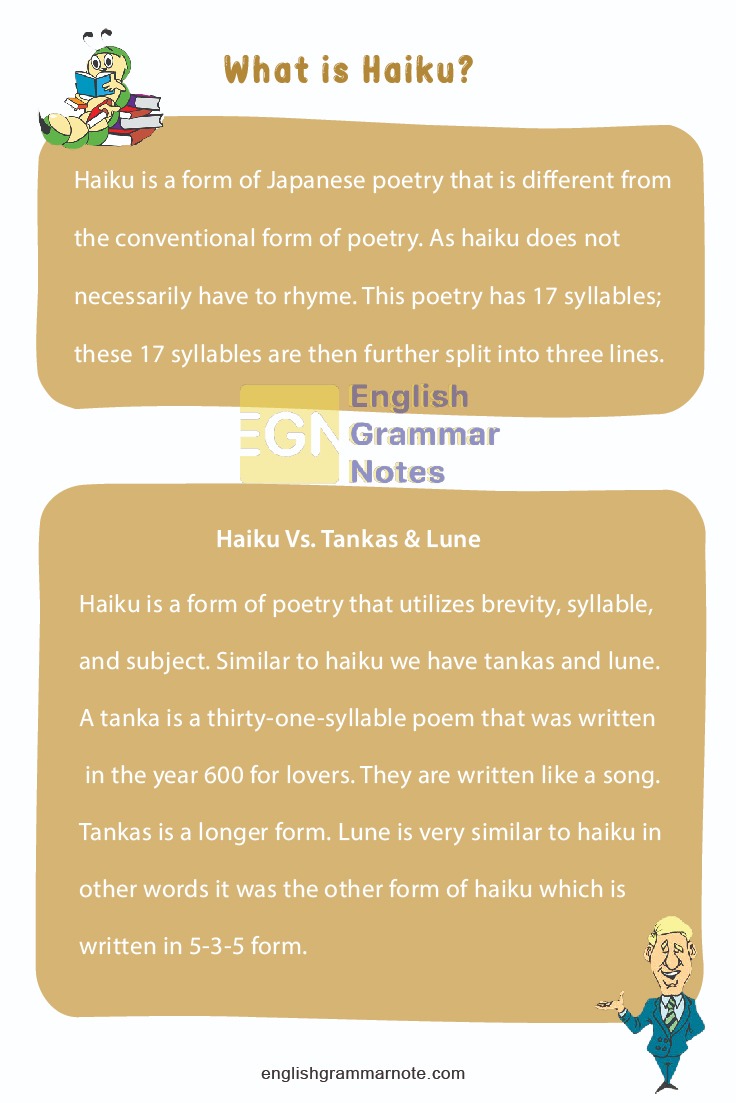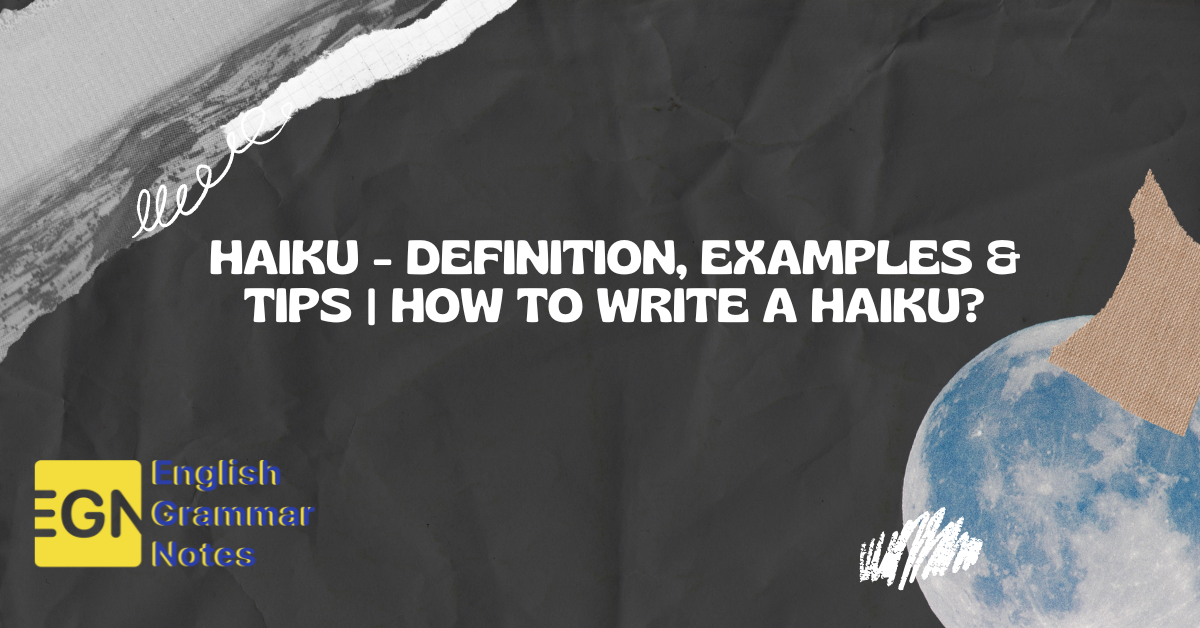Do you have a passion or interest in Haiku? Now you may have a doubt that what is this haiku? Don’t worry as we are here to explain to you. Haiku is a traditional form of poetry that has short, unrhymed lines. These can be written easily by anyone if you have a passion for them. In this article, we have provided you the complete details about haiku-like what is it, how to write and use it, and many more!! Scroll down to know all of them.
- What is Haiku?
- Examples of Haiku in Literature
- Tips to Write a Haiku
- Haiku Vs. Tankas & Lune
- What are the three rules of a haiku poem?
- Is haiku still famous today?
- Does a haiku have to rhyme?
What is Haiku?
Haiku is a form of Japanese poetry that is different from the conventional form of poetry. As haiku does not necessarily have to rhyme. This poetry has 17 syllables; these 17 syllables are then further split into three lines. The first line has 5 syllables, and the second has 7 syllables, finally, the third has 5 syllables. The origins of haiku can be traced back to Japan in the early 17th century. And this is a literary device.
At that time, it was used as a reaction to poetic traditions. This form of poetry became famous as haiku in the 19th century.
Examples of Haiku in Literature
Here we have provided you with examples of Haiku written by Japanese poets.
Poetry 1:
Sparrow’s child
out of the way, out of the way!
the stallion’s coming through
Poetry 2:
Light of the moon
Moves west, flowers’ shadows
Creep eastward.
Poetry 3:
From time to time
The clouds give rest
To the moon-beholders.
Poetry 4:
An old silent pond
A frog jumps into the pond,
splash! Silence again.
Tips to Write a Haiku
You can also write a haiku poem in some easy steps. You can follow the steps below to write a haiku of your own.
- The first step is to have a general idea or topic you want to write your haiku about. You can follow the 5-7-5 structure of a haiku right from the beginning, or you can experiment with the structure of the haiku. If you are writing an English haiku, you will need to separate it into three lines. As a beginner, you have the freedom to express yourself in different styles. The good thing about haiku is that there is no rigid format that you have to follow.
- Your next step is to think about the subject of the haiku. The subject of your haiku could be anything, regardless of its nature or size. If you struggle to find the ideal subject matter for your haiku, you can start by clearing your mind and paying attention to all the small details around you. Haikus mostly have a nature-centered theme. Your first haiku don’t need to have a profound meaning; it can just be a description of your surroundings.
- You can start by using shorter words and phrases. These phrases should, however, evoke a strong image. You can read other haikus from poets for reference. The main idea behind writing a haiku is to set a mood by just using a few words.
- You can use a cutting word or kireji to create a pause and break in the meter. It is essential to use punctuations and conjunctions to make a proper flow of rhythm in the poem.
Also check:

Haiku Vs. Tankas & Lune
Haiku is a form of poetry that utilizes brevity, syllable, and subject. Similar to haiku we have tankas and lune. A tanka is a thirty-one-syllable poem that was written in the year 600 for lovers. They are written like a song. Tankas is a longer form. Lune is very similar to haiku in other words it was the other form of haiku which is written in 5-3-5 form. This was called American haiku. It is written in very short forms.
English Grammar Notes website explains the different grammar topics rules, examples, and use of vocabulary in different situations.
Frequently Asked Questions on Haiku
1. What are the three rules of a haiku poem?
The three main rules of writing a haiku are that a haiku has 17 syllables. These 17 syllables are divided into three lines. The first line has 5 syllables, the second line has 7, and the third line has 5 syllables.
2. Is haiku still famous today?
Yes, haikus are still prevalent these days. These are now not only restricted to describing nature and creatures. Artists now want to express their emotions and feelings through haikus. Haikus must be thought-provoking and have some deeper meaning behind it.
3. Does a haiku have to rhyme?
No, it is not necessary that your haiku has to rhyme. Haikus are not like conventional poetry. The main idea of a haiku poem is to convey the poet’s idea. This is also why haikus are great for new writers to get their hands into.
Wrapping Up
We as a team provided complete information about Haikus and if you are searching about this topic hope our article is useful for you. Haiku is a brilliant form of expression and art. If you have a passion to write haiku you can write it with little knowledge. Still, if you have any doubts you can comment to us in the comment section. Stay connected to our website for more updates.
